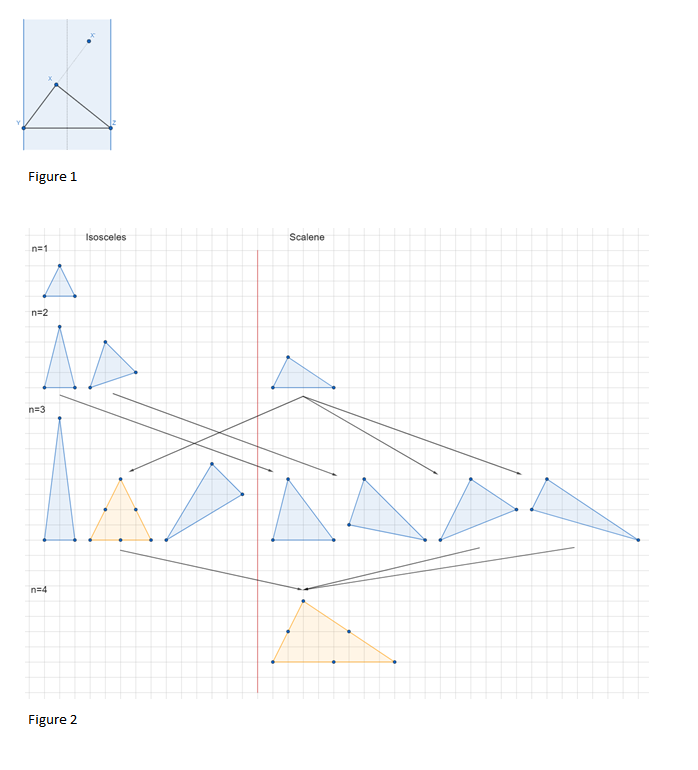Triangle Math
July 2018 : Solution
The answer to this month’s puzzle is that there are 2^n – 1 such triangles.
While the full proof has a lot of tricky details involving Pick’s theorem and modular arithmetic, here is a sketch of the main ideas:
Take an acute triangle XYZ and a vertex X, and assume X is closer to Y than to Z. You can generate an acute triangle X’YZ with double the area by extending the side YX to X’ where the distance of X’ to Y is twice the distance of X to Y. We say that triangle XYZ “generates” triangle X’YZ. See Figure 1.
Note that if YX = XZ (the triangle is isosceles), then X’YZ is a right triangle and we should not count it. Figure 2 shows the set of valid triangles for n=1, 2, 3 along with an example triangle from n=4. An arrow from triangle A to triangle B means that triangle A generates triangle B
It turns out that the number of acute isosceles triangles is simply n. Each isosceles triangle at level n generates one scalene triangle at level n+1. Each Scalene triangle at level n generates 3 triangles at level n+1.
If the midpoints on each side of a triangle are each lattice points, then the triangle behaves differently (see the two orange triangles in Figure 2). If it is isosceles, it is generated once instead of zero times, and if it is scalene, it is generated three times instead of once. Note it is easy to count the number of such triangles because connecting the midpoints gives you a triangle at level n-2 (there is exactly 1 scalene triangle at n=2, so there is exactly once scalene triangle with lattice midpoints at n=4)
From here you can build a recursive formula for the number of triangles at each n, and you find that the total number is 2^n-1.
Congratulations to everyone who solved this month’s puzzle!
